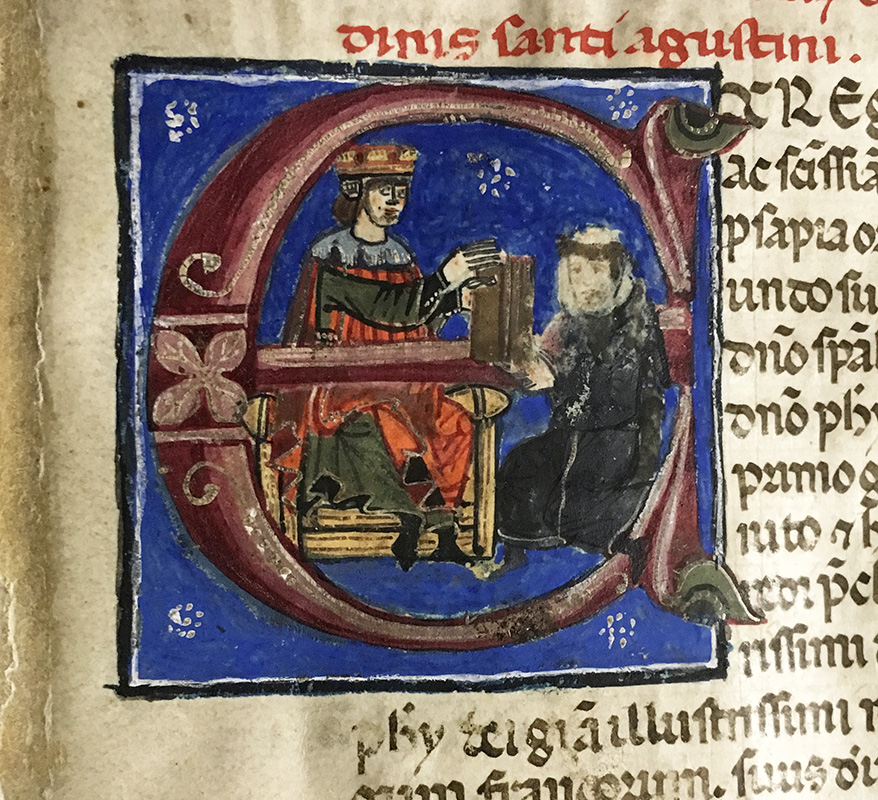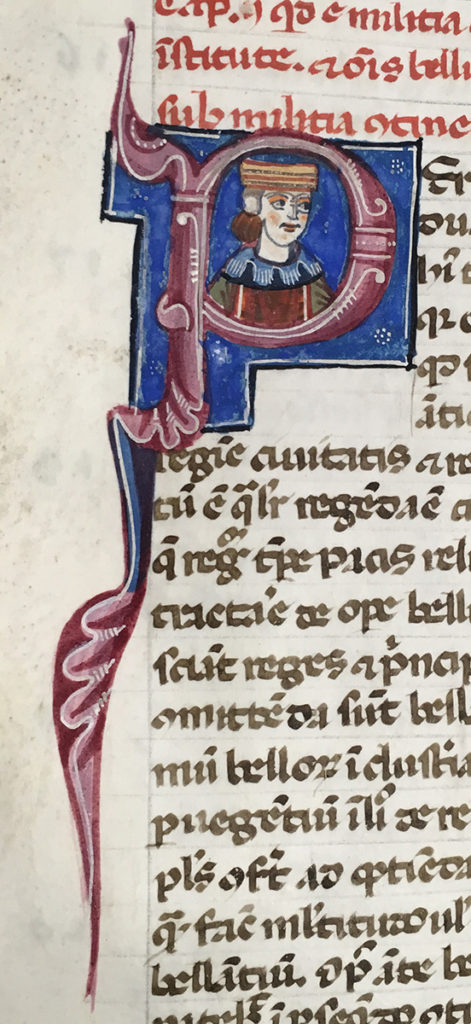I have written several posts regrading initials in medieval manuscripts (here, here, here, and here), and here’s yet another. This week it’s about historiated initials, the most elaborate initials one can find in manuscripts. Historiated initials are letters which contain “an identifiable scene or figures, sometimes relating to the text.”

On folio 1r of 10a 212, Giles of Rome’s De regimine regem et principum, is a 10-line historiated initial “E” (see above). On the right-hand side is a kneeling friar, handing a book to a king or prince on a throne – probably meant to depict Giles presenting De regimine to Philip IV of France, to whom it was dedicated. The friar’s face seems to have been rubbed off. Both figures fit neatly inside the pink-painted “E” on a blue background.
Historiated initials containing presentation scenes were not uncommon. Presentation scenes served not only to authenticate the work by depicting the (ideally) well-known author, but also to associate the manuscript and the owner of the manuscript with some sort of authority with the painting of the king or prince.
10a 212 includes two other historiated initials: Peter Kidd has tentatively identified them as being “busts of physicians(?)” in his Descriptive Catalogue of the Medieval Manuscripts in the Library of The College of Physicians of Philadelphia, Philadelphia.
Sources/further reading:
Briggs, Charles Fairbank. “The English manuscripts of Giles of Rome’s ‘De regimine principum’ and their audience, 1300-1500.” Dissertation, The University of North Carolina at Chapel Hill, 1993.
Brown, Michelle P. “Historiated initial.” Understanding Illuminated Manuscripts: A Guide to Technical Terms. J. Paul Getty Museum: Malibu and British Library: London, 1994. Courtesy of Michelle Brown and the British Library: https://www.bl.uk/catalogues/illuminatedmanuscripts/GlossH.asp
Weston, Jenny. “Historiated Initials: Letters with a Story to Tell!” medievalfragments [blog]. Turning Over a New Leaf: Manuscript Innovation in the Twelfth Century, Institute for Cultural Disciplines, Universiteit Leiden. 1 February 2012.


